Maghrebian Economic Area (Morocco)

African - Islamic Civilization: Maghrebian Economic Area. Arab Maghreb Union
- Introduction to the Maghrebian Economic Area as a part of the Islamic Civilization and the African Civilization
- Islam in the Maghrebian Economic Area
- Economic Profile of the Maghrebian Countries: Morocco, Mauritania, Algeria, Tunisia and Libya
- Businesspeople of the Maghrebian Economic Area
- Logistics in the Maghreb
- Interactions of the Maghrebian Economic Area with the rest of the African Economic Areas (West Africa, Central Africa, Southern Africa, East Africa)
- Interactions of the Maghrebian Economic Area with the other economic areas
- Economic institutions related to the Maghrebian Economic Area
The objectives of the subject “Maghrebian Economic Area” are the following:
- To understand the influence of Islam on the Maghrebian Economic Area
- To define the economic characteristics of the Maghrebian Economic Area
- To know the economic profile of the Maghrebian Countries
- To understand the economic integration process in the Maghrebian Economic Area
- To analyze the main businesspeople in the Maghreb
- To explore the economic relationships with the others economic areas of different civilizations
- To analyze the main Economic Organizations related to the Maghrebian Economic Area

The Subject “Maghrebian Economic Area” belongs to the following Online Programs taught by EENI Global Business School:
Courses: Islam & Business, Business in the Maghreb.
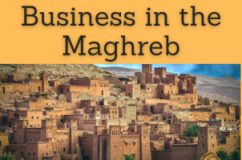
Doctorate: Ethics, Religions & Business, Islamic Business, African Business, World Trade.
Masters: International Business, Foreign Trade , Religions & Business.
Languages:  or
or  Espace économique maghrébin
Espace économique maghrébin  Espacio Económico Magrebí
Espacio Económico Magrebí  Espaço Económico Magrebino.
Espaço Económico Magrebino.
Download the Syllabus of the Subject “Maghrebian Economic Area” (PDF).
- Credits of the Subject “Maghrebian Economic Area”: 1

- Duration: one week
Masters adapted to the Libyan Students.
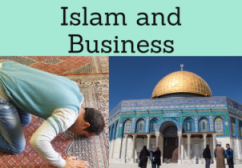
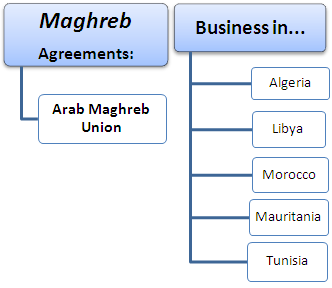
Maghrebian Economic Area.
The Maghrebian Economic Area consists of the five countries of the Arab Maghreb Union (AMU):
- Morocco
- Mauritania
- Algeria
- Tunisia
- Libya
- Furthermore, of the Western Sahara
Sample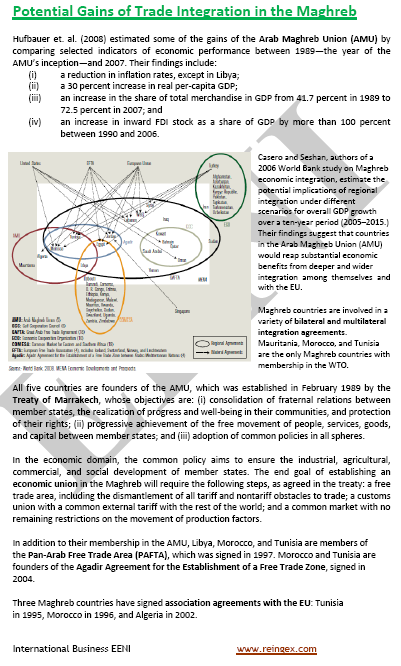
Sunni Islam (Maliki) is the main religion of the Maghrebian Economic Area.
Culturally we could consider to North Africa as a part of the Islamic Civilization (Sunnite), but from economic integration also part of the African Civilization.
- Arabic and French are the most spoken languages in the Maghreb
- Tamazight is the language of the Berbers
- 87 million people live in the Maghreb
- The most populous country is Algeria (40 million people), followed by Morocco (33)
- The largest Economy (GDP) is Algeria, followed by Morocco and Tunisia
- All the Maghrebian Countries were former colonies of the European powers (France, Spain, and Italy)
- Significant effects of the Arab Spring
- Absolute instability in Libya
- Influence of the Sahara is crucial on the Maghreb
- Importance of the Maghrebian Diaspora in France and Spain
- Hichem Djaït is an outstanding Tunisian Muslim historian
The largest Maghrebian ports are the Port of Casablanca, Port of Algiers, and Port of La Goulette.
Trans-Saharan corridors crossing through the Maghreb: Tripoli-Windhoek, Dakar-Lagos, Algiers-Lagos, and Cairo-Dakar Corridor (Mauritania).
Businesspeople in the Maghrebian Economic Area: Othman Benjelloun, Anas Sefrioui, Mohamed Hassan Bensalah, Ali Haddad, Issad Rebrab, Aziz Akhannouch, Miloud Chaabi, Mohamed Ali Harrath.
The main Maghrebian economic integration process is the Arab Maghreb Union.
- Mauritania and Tunisia has a trade agreement
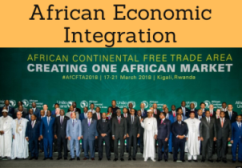
Main integration agreements with the others economic areas.
- Community of Sahel-Saharan States (CEN-SAD) (Morocco, Mauritania, and Tunisia)
- Morocco and Tunisia belong to the Arab Mediterranean Agreement (Agadir)
- Trade Preferential System (OIC-TPS)
- Greater Arab Free-Trade Area (GAFTA)
- US-Morocco Agreement
- Morocco and Tunisia have Trade Agreements with Turkey
- Jordan has trade agreements with Algeria, Libya, and Tunisia
- Iran has a trade agreement with Algeria
- Mauritania has an agreement with the Economic Community of West African States (ECOWAS)
- Libya is a member of the Common Market for Eastern and Southern Africa (COMESA), COMESA-EAC-SADC Tripartite Agreement, and COMESA-U.S. Agreement
- EU-Maghreb
- Euro-Mediterranean Partnership (Algeria, Morocco, Tunisia, and Mauritania)
- European Neighborhood Policy (Algeria, Libya, Morocco, and Tunisia)
- Economic Partnership Agreements with Algeria, Morocco, and Tunisia
- Mauritania is a beneficiary of the Africa-EU Partnership
- The EFTA has a trade agreement with Tunisia and Morocco
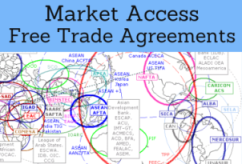
Economic Organizations related to the Maghrebian Economic Area.
- OIC
- Islamic Development Bank
- Arab League
- Afro-Arab Cooperation
- Arab Development Funds
- Africa-Asia Strategic Partnership
- Economic Commission for Western Asia (ESCWA) (Libya, Morocco, Mauritania, and Tunisia)
- All the Maghrebian Countries are part of the African Union (except Morocco), Economic Commission for Africa, African Development Bank, Summit of South American-Arab Countries, and Asia-Middle East Dialogue
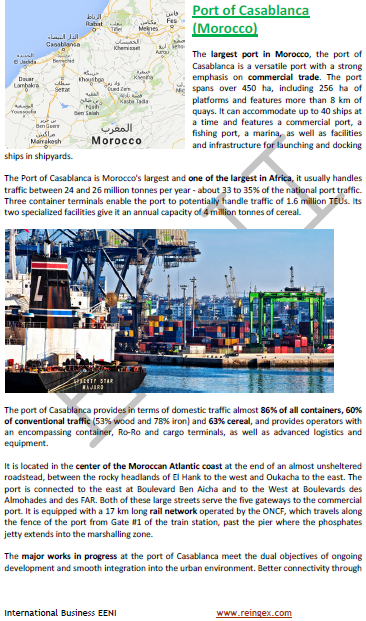
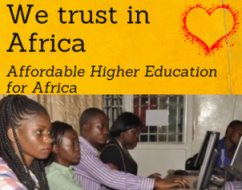
(c) EENI Global Business School (1995-2024)
We do not use cookies
Top of this page



